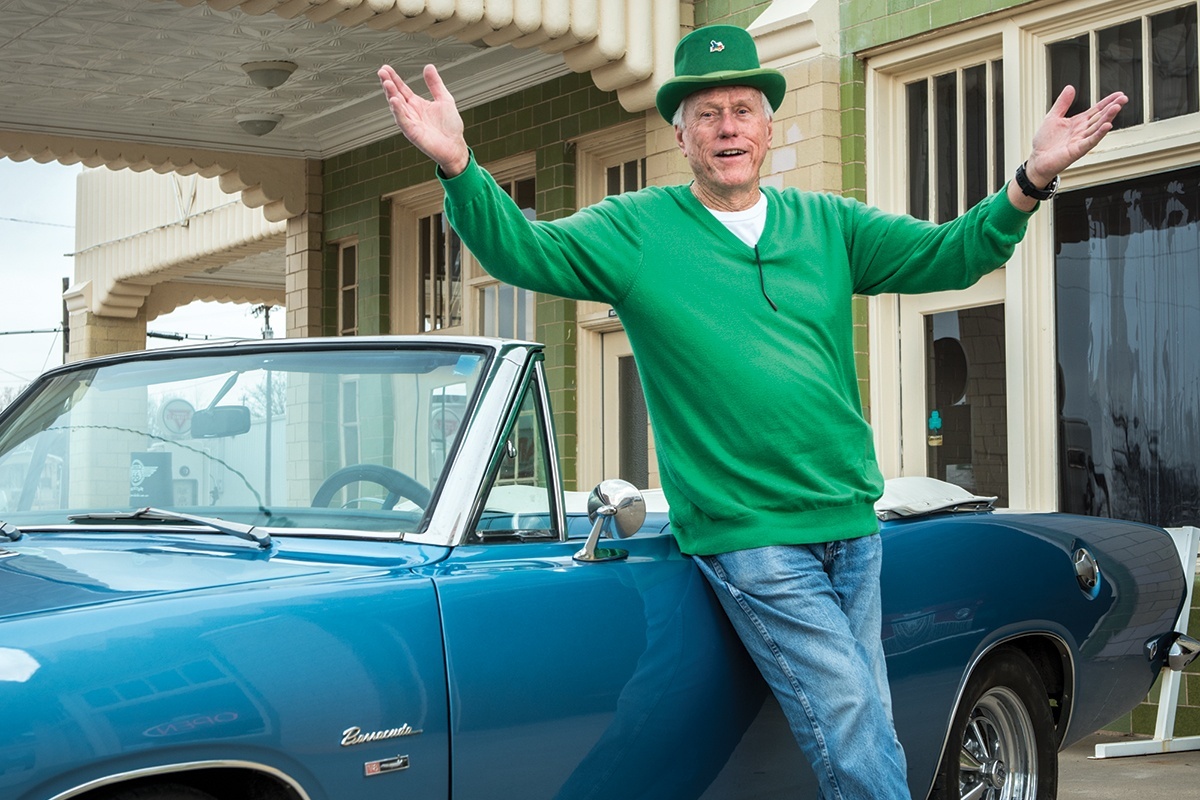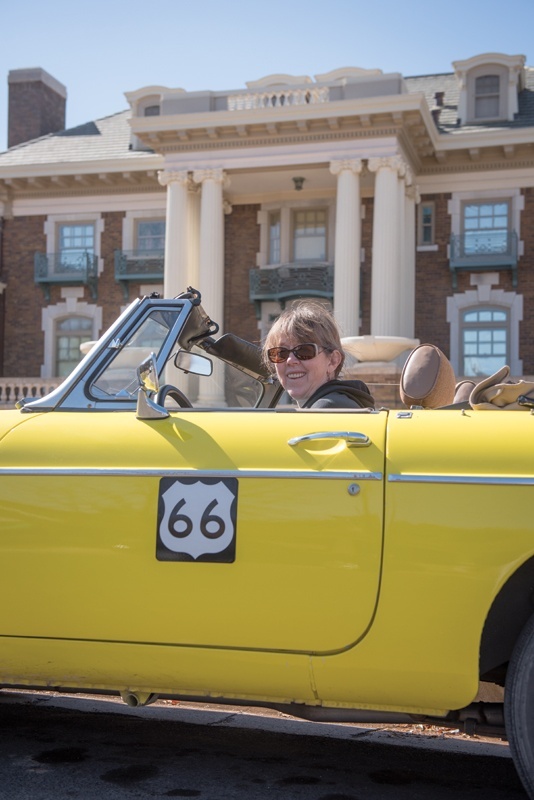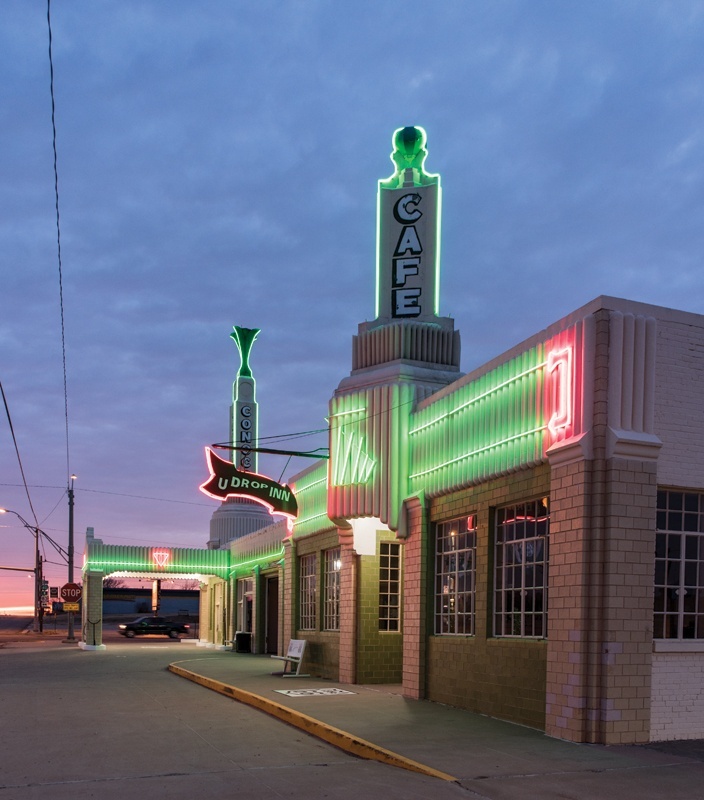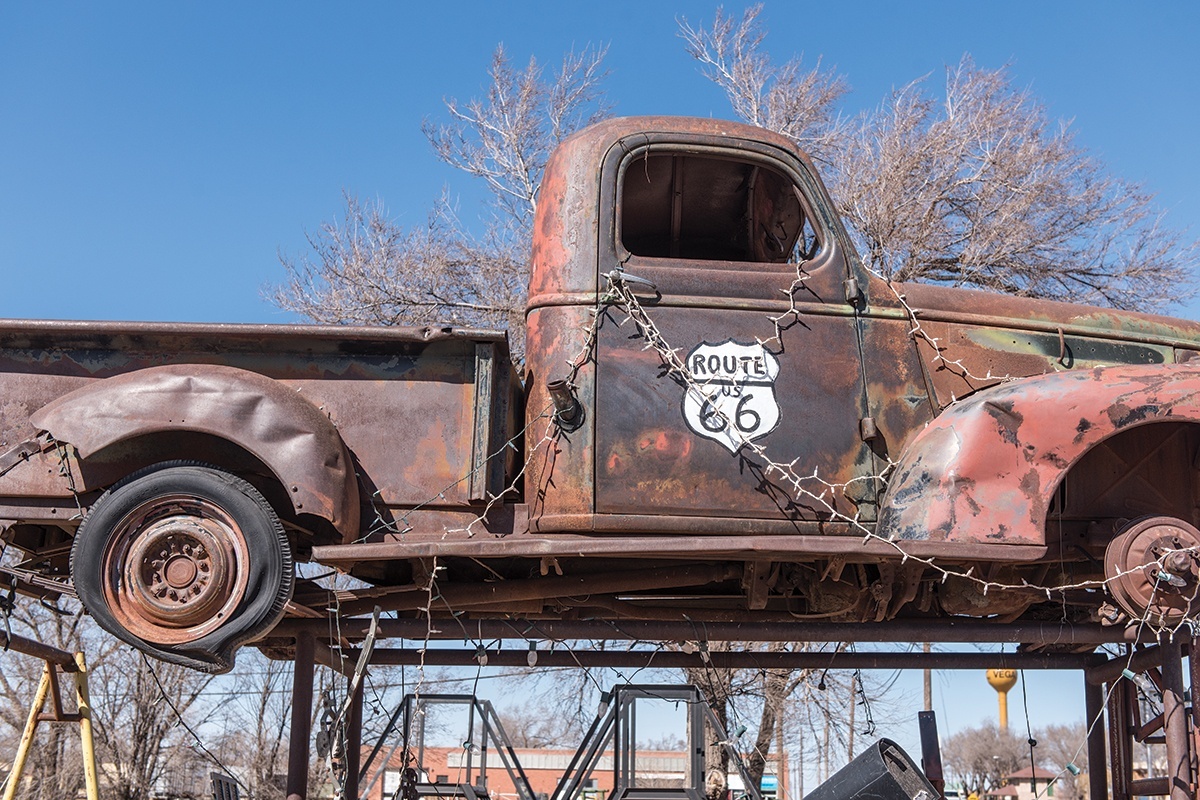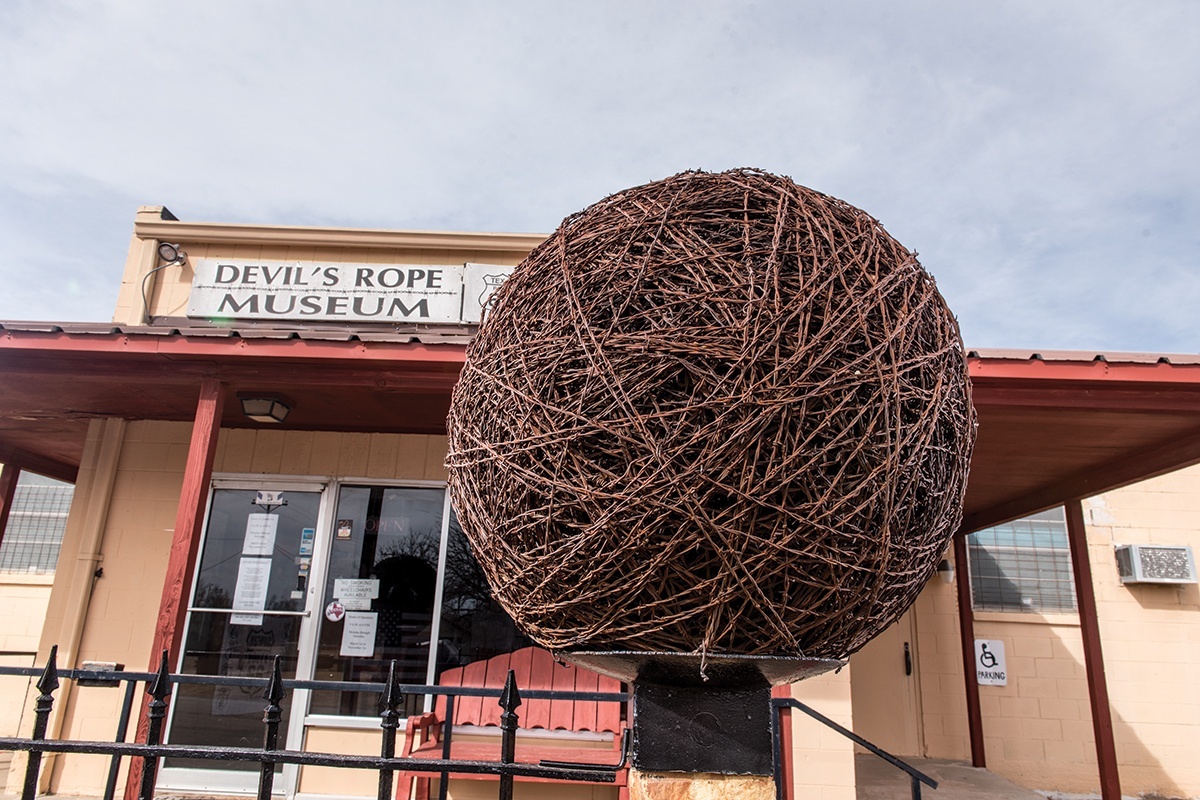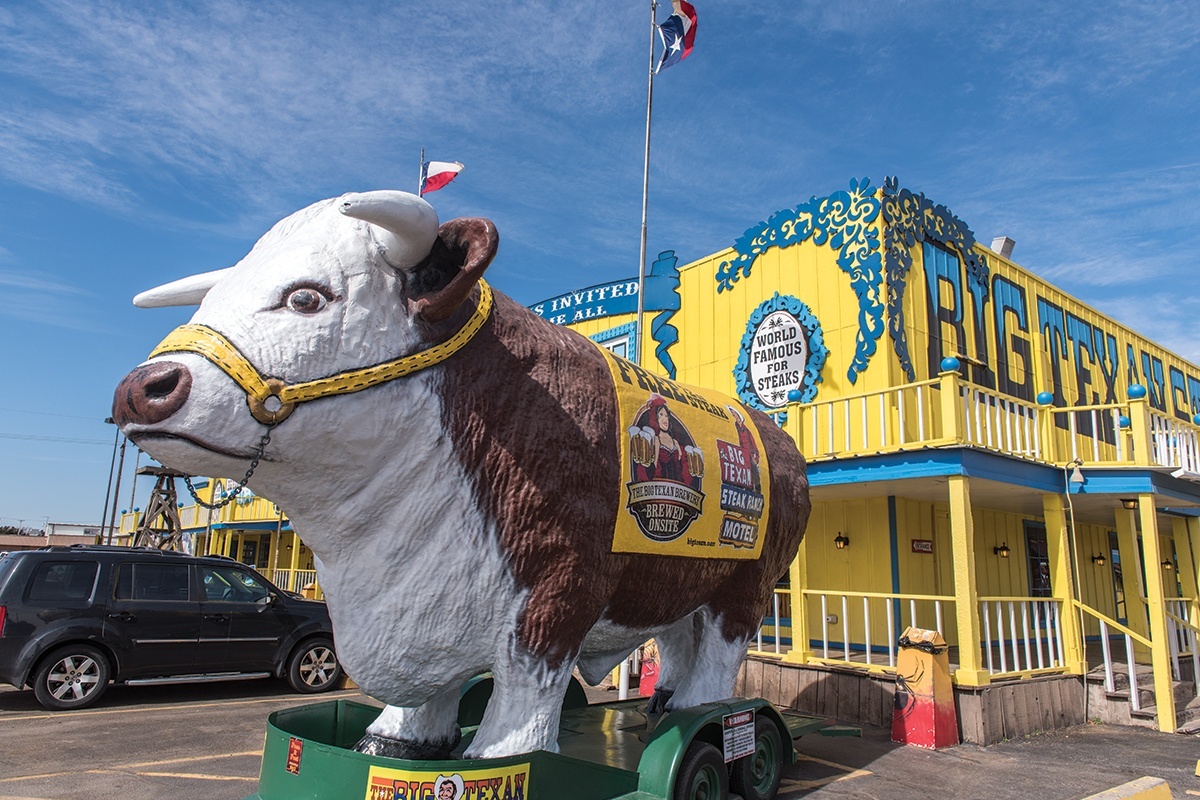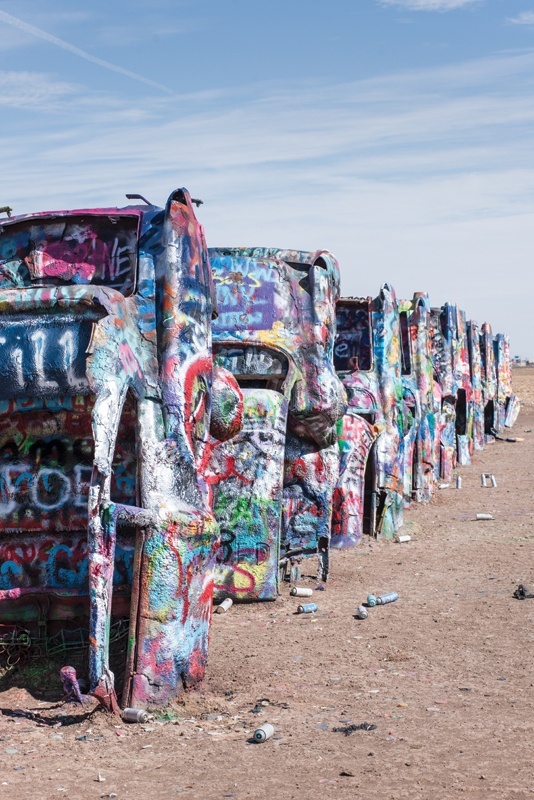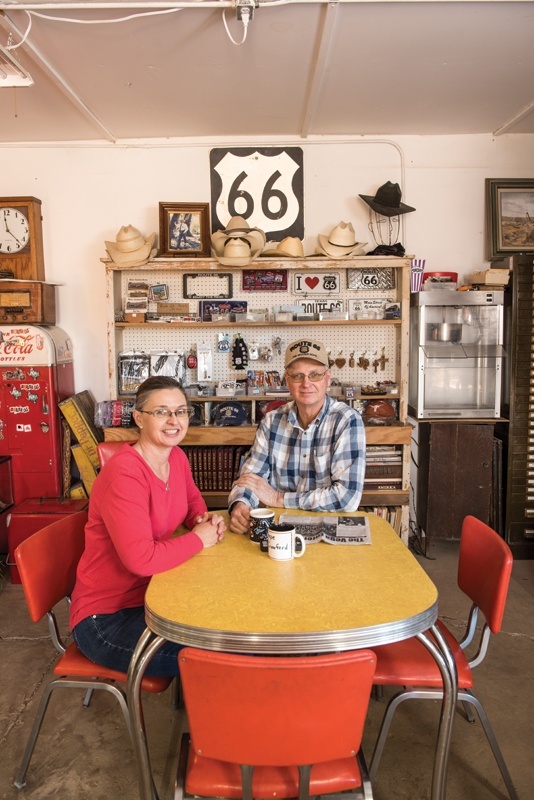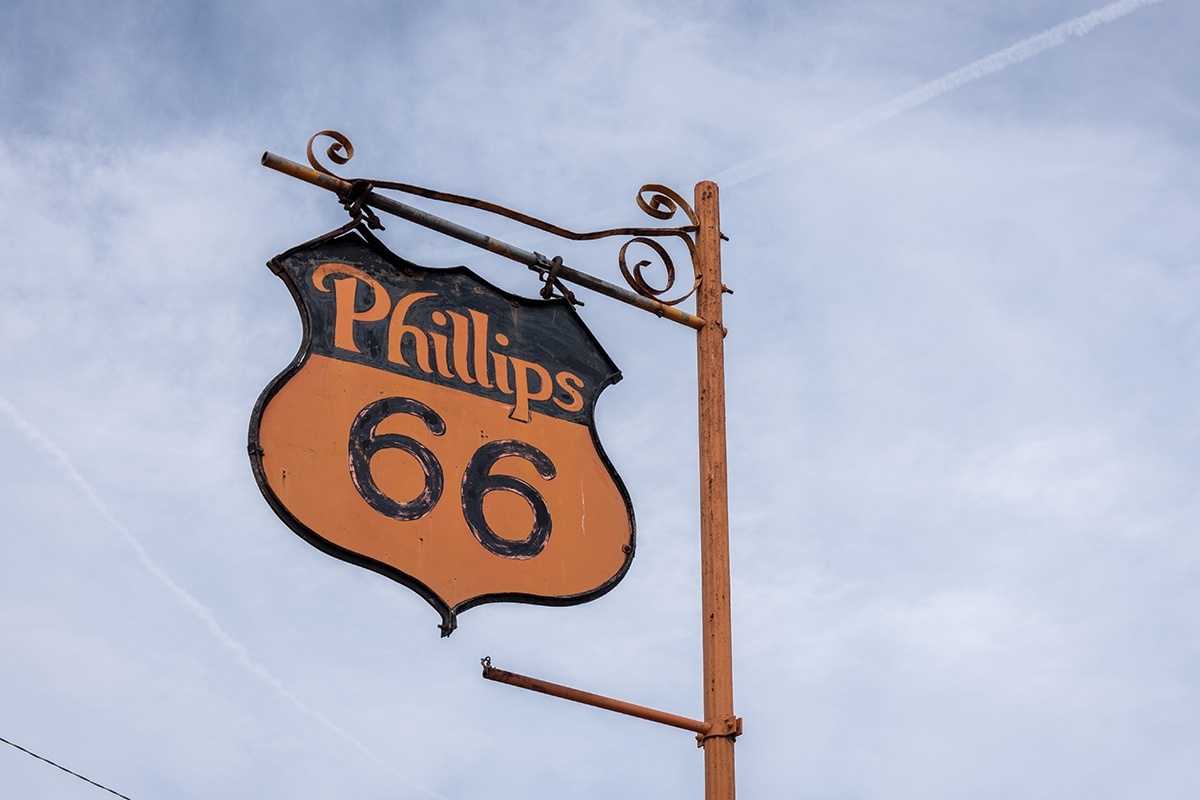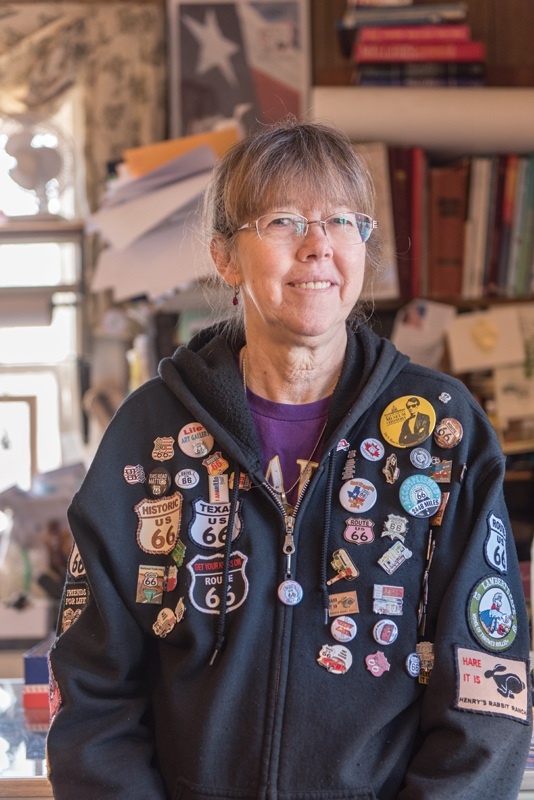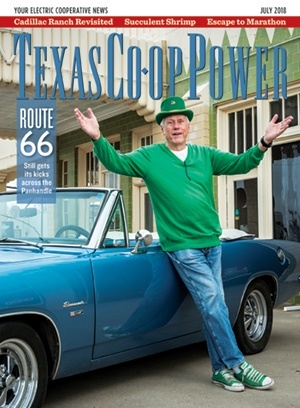One hundred seventy-eight miles of Route 66, the iconic American highway, traverse Texas, from ghost town Glenrio on the western border of the Panhandle right through Amarillo to Oklahoma. It’s still one of the biggest draws for international tourists to the Texas Panhandle.
“Americans travel the road for nostalgia,” says David Rushing, city manager for Shamrock, a town along the road, and a member of Greenbelt Electric Cooperative. “The internationals travel for a dream. For the internationals, it represents freedom.”
This summer, travelers will voyage across the globe—from places like Australia, New Zealand, Germany, Spain and Scotland—to Shamrock, 90 miles east of Amarillo, to celebrate the Mother Road.
With a population of 1,946, Shamrock will be the smallest town to host the Route 66 Festival, which celebrates the U.S. highway that journeys from Chicago to Los Angeles through eight states. This year’s festival runs July 12–15. As legislation supporting the designation of the route as the Route 66 National Historic Trail (to become part of the National Trails System) makes its way through Congress, the affection and nostalgia for historic Route 66 continues to grow.
The festival offers a useful outline for exploring Route 66 any time. Start in McLean, 21 miles west of Shamrock, and you’ll discover the Devil’s Rope Museum and Route 66 Museum. On Friday, there will be “roadie” day trips—a chance to drive Route 66 for yourself—before a rodeo and concert with Cody Canada and the Departed and Dalton Domino. Saturday kicks off with cowboy coffee, followed by a chuck wagon lunch, a car show, more roadie day trips, a silent auction, a banquet with music by the Road Crew (dubbed the official musical ambassadors of Route 66) and a second rodeo with music by Charlie Robison and Bri Bagwell.
A poster in the lobby of Shamrock’s Texas Theater proclaims that, at one time, at least 49 theaters named “Texas” showed films for the public. Now, Shamrock’s is one of the oldest continuously open Texas Theaters, and it still screens first-run movies on weekends. At the Pioneer West Museum, travelers learn of Wheeler County boy Alan Bean, the fourth person to walk on the moon, who died in May. Kiss a piece of the Blarney Stone and check out the tallest water tower in Texas.
The U-Drop Inn, an iconic part of Shamrock’s identity and a top attraction among all of Route 66, is an art deco building of green glazed tile and brick, richly adorned with neon lights. When it opened in 1936, travelers ate in its diner and gassed up at the Tower Station (all part of the same building) as they made their way across the country. Elvis stopped here multiple times on his travels between Memphis and Las Vegas.
The landmark was restored in 2004 and now serves as a visitors center and gift shop offering Route 66 memorabilia and certified organic cotton T-shirts made from cotton grown nearby (its best-seller). Visitors are welcome to bring a lunch and eat in the booth where Elvis sat. There’s even a Tesla Supercharger station here, a testament to a new chapter of traveling Route 66.
In 2017, over 22,500 visitors from 110 countries stopped at the U-Drop Inn, more than 10 times the population of Shamrock.
“The Route 66 phenomenon just gets bigger every year,” says Shamrock Mayor Buc Weatherby. “We refer to ourselves as the crossroads of America because Shamrock is the only place in the United States where two border-to-border highways intersect. That’s U.S. 83 and I-40.”
Amarillo, 95 miles west of Shamrock, is the largest Texas city along Route 66. Eric Miller, director of communications for the Amarillo Convention & Visitor Council, says Route 66 is one of the top five attractions in the city, according to visitor surveys, along with Cadillac Ranch, Big Texan Steak Ranch, Palo Duro Canyon State Park and the American Quarter Horse Hall of Fame & Museum.
“In the last 25 years, people have started to get reinterested in Route 66,” Miller says. “It’s a very unique part of Texas. It’s an incredible part of history. And it happened right here, not that long ago. If you get off onto Route 66, you feel the roll, experience the wide-open spaces, see the farmland, the ranchland, and you get an idea of why it was important.”
The Route 66 Historic District in Amarillo, lined with buildings from the 1920s, ’30s and ’40s, runs a full mile on Sixth Avenue between Western Street and Georgia Street. It was developed in the early 1900s as the San Jacinto neighborhood, connected to downtown via streetcar. Today, it’s a popular hangout for roadies and locals alike to spend an afternoon shopping, catching up over food and drinks, and gathering for live music.
This historic district embodies the intersection of the past and present. Grab a margarita and reliable Tex-Mex at Bracero’s Mexican Bar & Grill in a building that once housed a gas station. Enjoy a root beer float or share a pitcher of beer while a band plays at the GoldenLight Cantina. The GoldenLight serves burgers much as it has since it opened in 1946, and it is one of the oldest continuously operating restaurants on Route 66. Nearly two dozen antique shops along this stretch offer everything from vintage blown glass perfume bottles to old road signs.
Dora Meroney is the president of the Old Route 66 Association of Texas, treasurer of the Historic 6th Street on Route 66 Association and director of sales and services for her family’s Texas Ivy Antiques, located in the historic district.
“The love of Route 66 goes beyond the eight states that it passes through,” Meroney says. “We have roadies from Ohio, Michigan—all over the United States. We’re trying to save what we can save, revive what can be revived and blend it with the new stuff that comes along.”
Route 66, the first major transcontinental highway across the United States, was created in 1926 as part of a new federal highway system. The route connected Chicago and Santa Monica, California, via a patchwork of existing roads that stretched 2,448 miles. It made transportation of goods from rural farms to the larger cities much easier. During the Dust Bowl, the route took on a new purpose. It became the Mother Road, as John Steinbeck named it in The Grapes of Wrath, leading all those in search of another promised land to the fabled green lands of California.
Back then, all they had was the road. The land shriveled beneath their feet as the clouds were all cried out. The Dirty ’30s came after the Roaring ’20s had been quickly ushered out by the stock market crash of 1929. The party was over, and a mass migration would begin. The crushing drought was followed by high winds that ripped away the rich topsoil, destroying a way of life for thousands of American farmers. Once those desperate folks were pushed out of their homes by a failed economy, they exerted the sheer will to find a better life and fell in line along one particular path.
World War II marked a new era for Route 66. Once the war was over and people finally had a little money to spend and some vacation time to burn, they took to the road again, this time for pleasure. By 1955, the number of automobiles registered in the United States had doubled since the end of the war. Motor courts, roadside diners and curio shops bloomed along the route that basically became Main Street in many of the small towns it passed through. Route 66 defined the ultimate road trip and was a part of pop culture.
Nat King Cole first recorded (Get Your Kicks on) Route 66 in 1946, and the song has since been recorded by dozens of other artists like Bing Crosby and the Andrews Sisters, the Rolling Stones and Asleep at the Wheel. The television series Route 66, starring Martin Milner and George Maharis, ran for four seasons in the early ’60s on CBS. Guest stars were the likes of Robert Duvall, Robert Redford and James Caan, and episodes were filmed on location across the country.
When President Dwight D. Eisenhower saw the benefits the German autobahn (a series of federal roads with high speeds and limited access) provided during the war, he decided America needed a similar system. The Federal-Aid Highway Act of 1956 was consequently signed into law, leading to the building of our interstates—and the demise of Route 66. The route was officially decommissioned in 1985, but today much of it is still drivable.
The 2006 animated movie Cars perhaps tells the story of Route 66 most simply and poetically as characters Lightning McQueen and Sally look down upon the fictional Radiator Springs, which represents all the small towns along Route 66 that once boomed with visitors, now bypassed by an interstate. As Sally points out, those were the days we traveled to have a great time, not to make great time. Ramone’s House of Body Art in the movie bears a striking resemblance to the U-Drop Inn.
Perhaps we travel to remember we’re alive. A trip down historic Route 66 honors the days when we took time to slow down to appreciate the scenery and talk with the people serving us. Route 66 represents not only a way across the country but a way of life.
“Our main job as curators of Route 66 is taking what the people before us have left us and making sure that we preserve it for the people that will come after us,” Meroney says.
Brenda Kissko is a native Texan who writes about nature, travel and our relationship with land. Visit her online at BrendaKissko.com.
